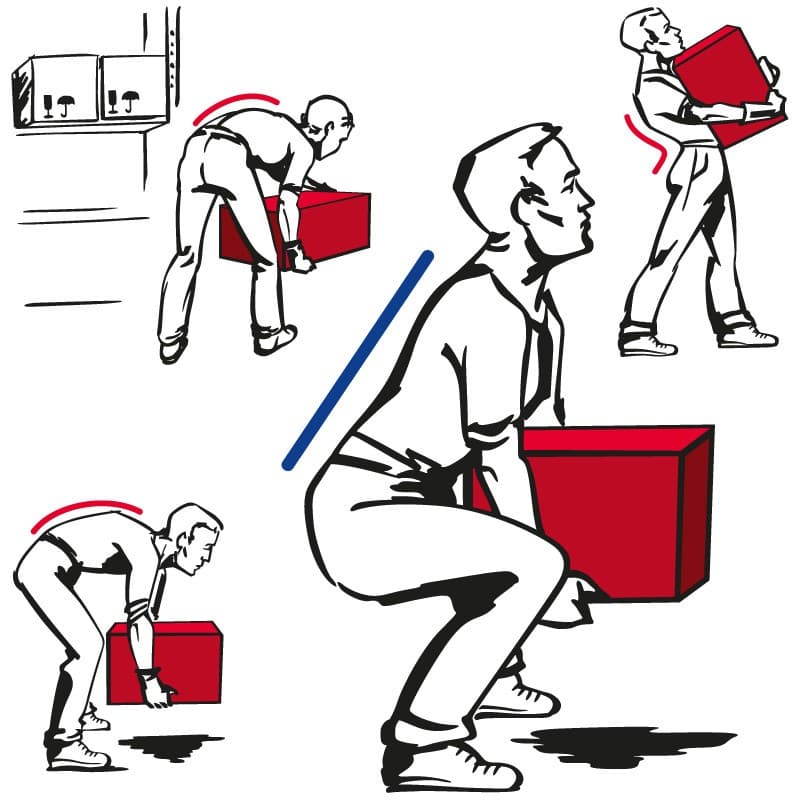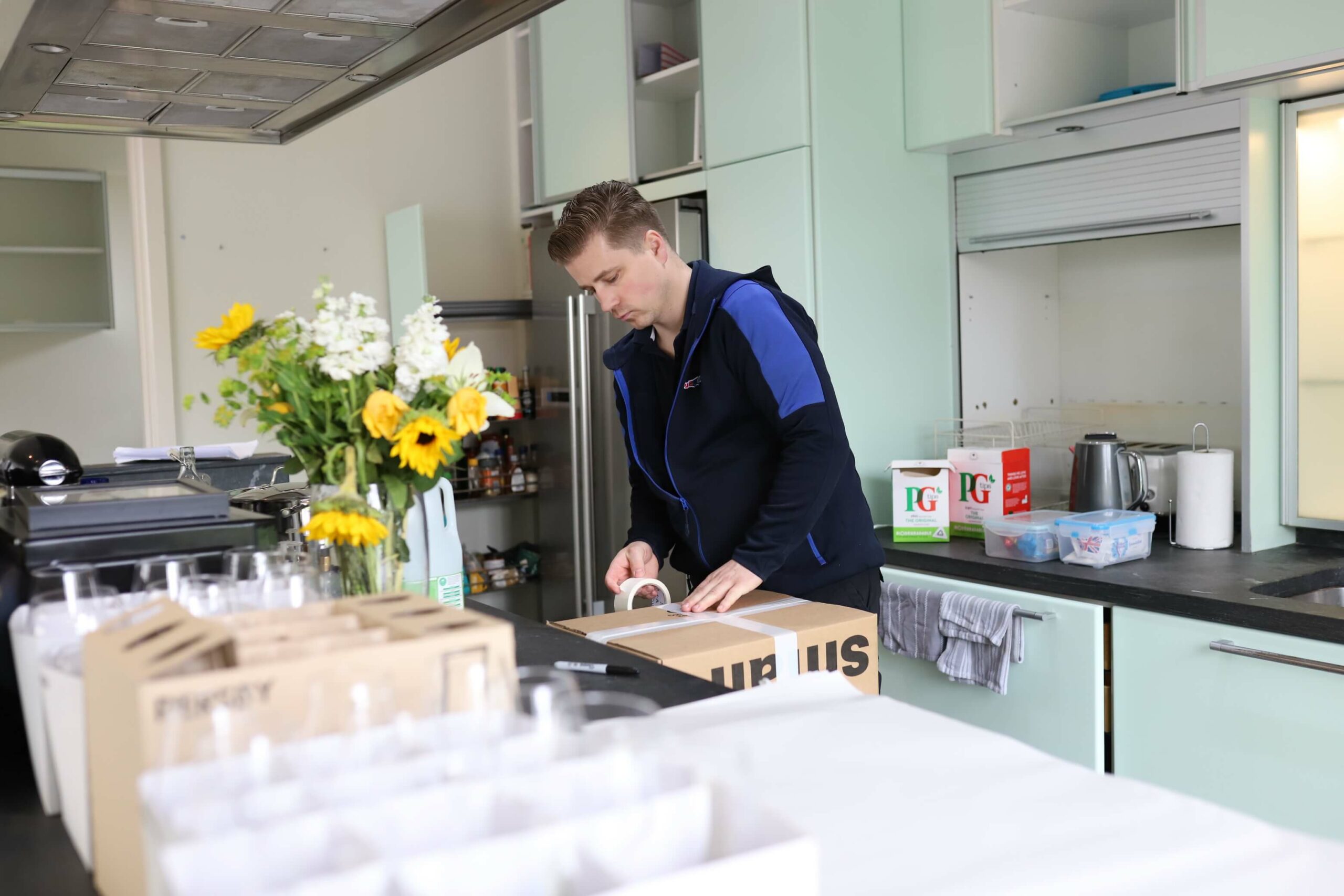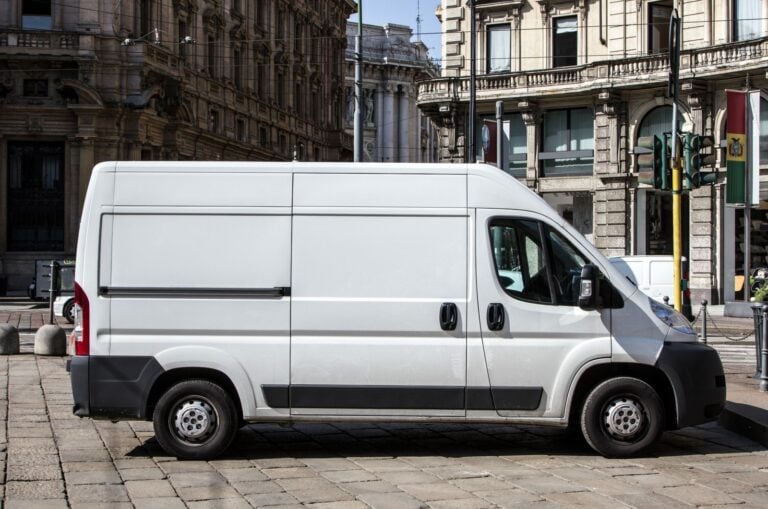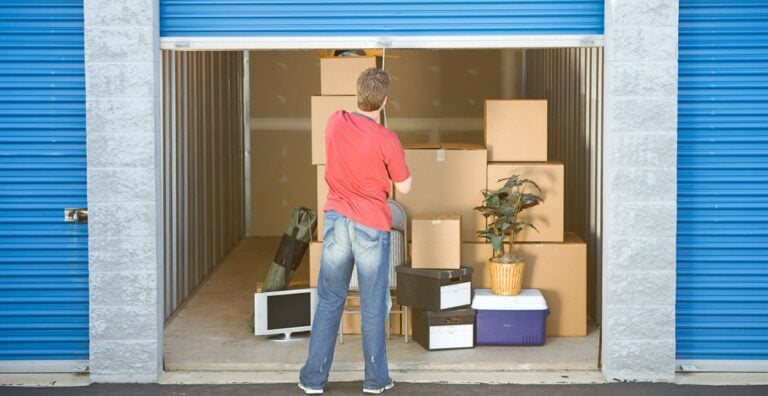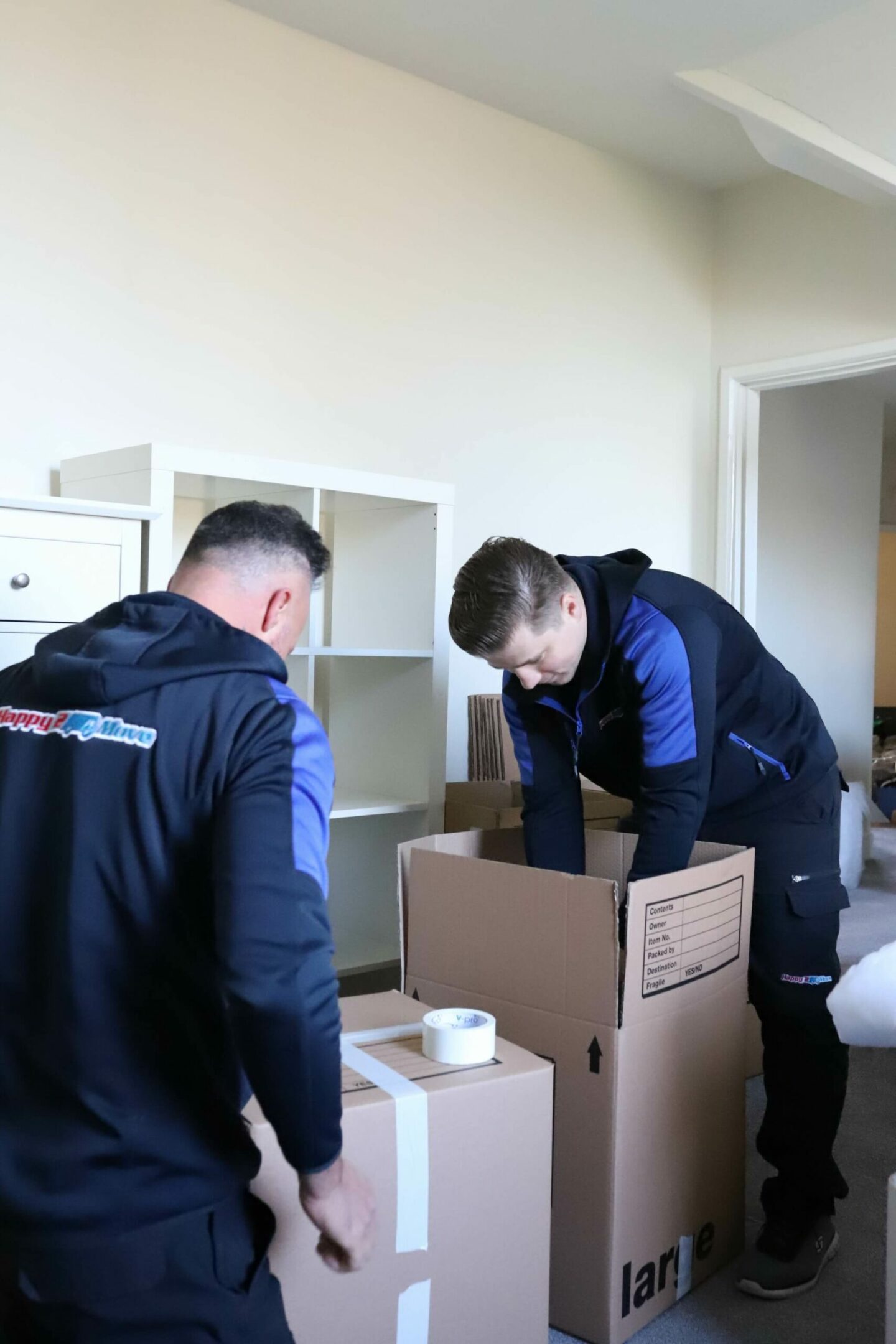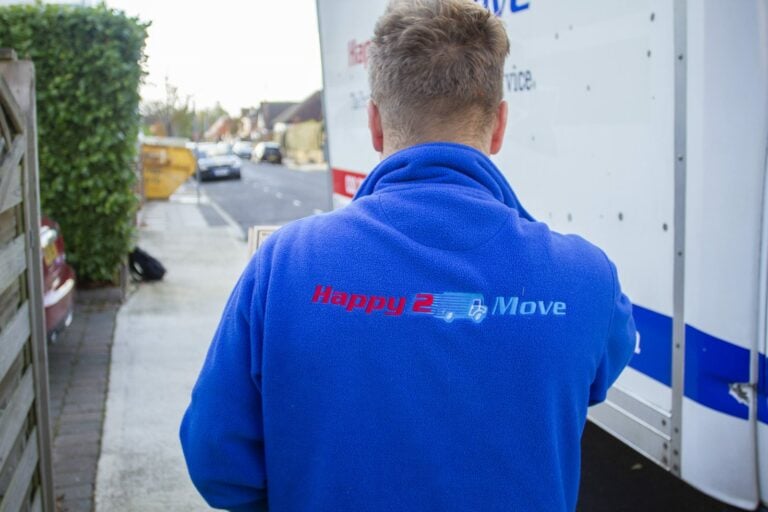
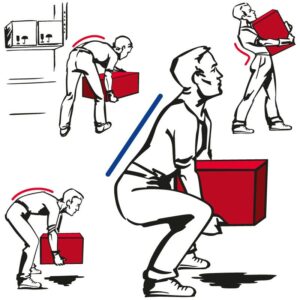 Did you know that back pain is the single biggest cause of time off work in the UK? According to the NHS, over 15 million sick days were taken in 2013 due to back injuries, many of which were caused by lifting objects without the kind of care such a task needs if we’re to stay fit and healthy. In this article, we look at safer lifting both at home and work.
Did you know that back pain is the single biggest cause of time off work in the UK? According to the NHS, over 15 million sick days were taken in 2013 due to back injuries, many of which were caused by lifting objects without the kind of care such a task needs if we’re to stay fit and healthy. In this article, we look at safer lifting both at home and work.
Not that all those injuries were caused in the office itself. Whether we’re packing up to move house, bringing home a piece of flat-pack furniture or simply having a good old clear out, we can do as much damage to our backs at home as we can at work.
Sure, not all back pain is likely to require a sick note from the doctor, but even if we can trudge on forth despite the discomfort, doing so often leads to a huge dip in our work-based productivity, and -at least for the time it lasts- a generally poorer quality of life.
Thankfully, there are a few things you can do to prevent this happening to you. Below, we share our top tips for safer lifting both at home and at work to ensure that the next object you lift doesn’t cause you to take one of those 15 million sick days.
Plan ahead
So, there’s a delivery just arrived in the office. It could be just a single, lightweight box or a heavy, cumbersome piece of furniture. Whilst you may be more likely to give some thought as to how you’re going to move the latter than the former, it pays to plan no matter what you’re lifting.
Contrary to popular belief, the weight of an item isn’t the biggest cause of injury whilst lifting. Rather, it’s the stress and strain put on your muscles when they’re not used correctly on in the best possible posture.
With that in mind, plan every lift, even if it’s only going through it in your head first. Visualize the movements, clear away any obstacles or obstructions that could mean you’re carrying the weight for longer than necessary, and think about if you’re going to need some help before you lift, rather than attempting a solo mission first.
Reorganize your space to reduce lifting
Though it may be something of a chore to rearrange your entire home or workplace, doing so with lifting in mind could not only go a long way to preventing serious injuries in the future, but could end up saving you time and boosting your productivity by reducing the amount of lifting you have to do in the first place. Can you place items at waist height so that you’re not bending down to lift things? Can you place storage closer to the door where you receive deliveries or bring items into your home?
Bend at the knees and keep your back as straight as possible
Thought squats were the exclusive reserve of fitness aficionados? Not so, they’ll actually do much to help you lift safely. Rather than bending your back when lifting, bend at the knees, get a firm hold of the object and rise up.
Don’t overreach
Get as close to the object as is comfortable and practical to avoid stretching out too far with the arms, as this can put a lot of strain on your neck, shoulders and back.
Give it a hug
You may not feel particularly affectionate about that new box of printer paper, but if you give it a hug whilst lifting, your back will love you for it. Hugging items close to your body, where it’s possible to do so, makes for a much easier lift than holding it with your hands alone.
Keep it at waist height
Again, this mostly depends on how practical it is to do so, but where you can, hold the item at waist level as this reduces the load on your spine and back muscles, meaning you’re less likely to cause yourself harm.
Avoid the twist
Pay no attention to that Chubby Checker tune playing on the office radio, the last thing you want to do is twist again, or at all. Keep the same posture for the duration of the lift, as a suddenly twist or other movement can do some serious damage to your muscles.
Hold your head high
Reduce the pressure on your neck, shoulders and spine by keeping your head up and looking straight ahead, rather than down at the thing you’re carrying.
Ask for help
There’s a big difference between what you can physically lift, and what you can actually lift safely. If you think an object is even marginally too heavy to pick up and carry comfortably, ask for help. The above tips work just as well around the home as they do at the office, so do keep them in mind the next time you lift and stay happy, healthy and safe wherever you are, and whatever you’re doing.
